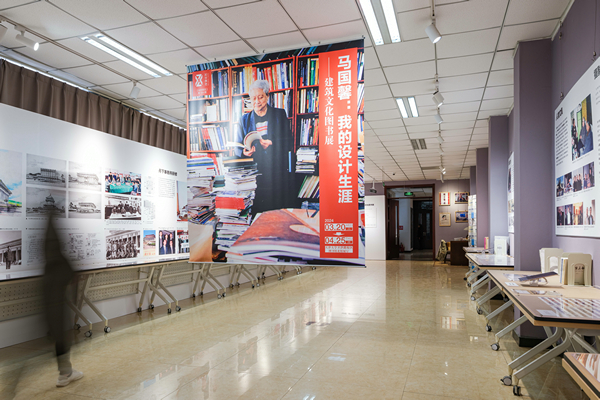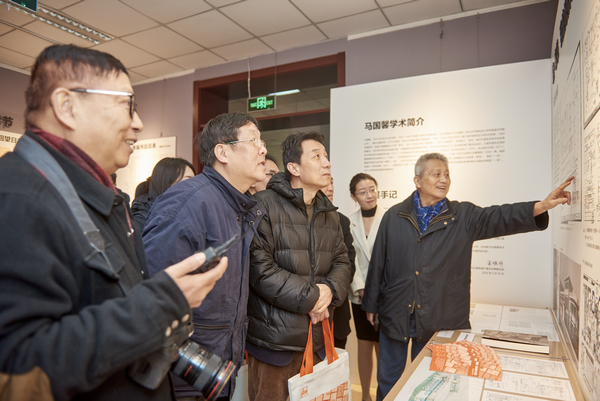

A leader in modern China’s architectural design, Ma Guoxin, 82, has created a body of work ranging from monumental buildings like the Chairman Mao Zedong Memorial Hall to imposing sports venues like the National Olympic Sports Center, as well as large-scale transport hubs like Terminal 2 of the Beijing Capital International Airport. All of these projects have played a significant role in national life over the last few decades.
Ma Guoxin: My Design Career — Books on Architectural Culture, a recently opened exhibition at the Tianjin University Library, chronicles Ma’s illustrious career in architectural design and shines a spotlight on his achievements as an author and editor of books promoting architecture.
Born in Jinan in 1942, Ma studied architecture at Tsinghua University. Upon his graduation in 1965, he joined the Beijing Institute of Architectural Design (BIAD), located on the Nanlishi Road in Beijing’s Xicheng district, where he began building his fruitful career that spanned more than half of a century. In 1997, he was named as an academician of Chinese Academy of Engineering (CAE), the highest academic title officially recognized by the Chinese government in engineering and technological sciences.
The exhibition’s first clue is guided by Memories of Nanlishi Road: My Design Career, a memoir by Ma published in September 2023, according to Jin Weixin, curator of the show and a researcher with the committee on 20th-century architectural heritage affiliated with the Chinese Cultural Relics Society.

Following this clue, visitors can learn through pictures, texts, manuscripts and objects about the iconic aspects of Ma’s design career, including his foray into architectural design, his three-year study under Japanese architect and Pritzker Prize winner Kenzo Tange in the 1980s, his recollection of designing his representative works, and his involvement in designing sports venues in Beijing for the city to host the 11th Asian Games in 1990 and two Olympic Games in 2008 and 2022.